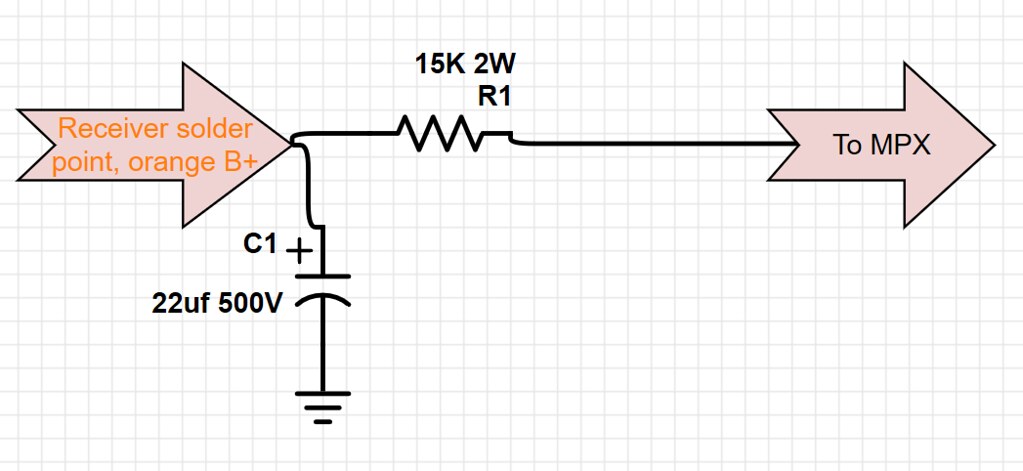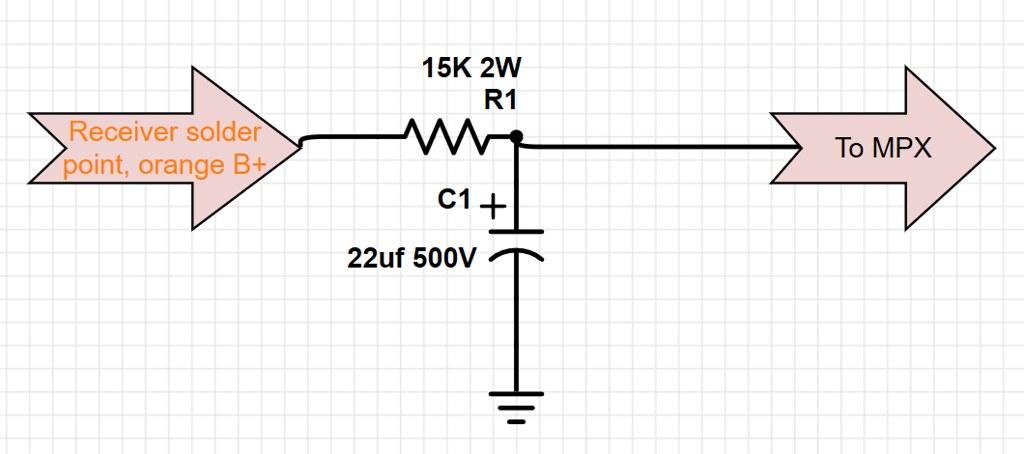And it may in your location. My notes don't show that is does, as that remedy was developed after I serviced your unit.
Dave
Dave
I'd say it's fine, I'm glad it was simple and easy for me. Thanks again for giving us Fish heads another great problem solver solution. Now if I can only master that individual bias modification, and EFB. Every time I sit and start to study it, something else comes up.At some level of signal strength, some modulation will always become apparent. The modification does not completely eliminate the noise detector; it simply renders it less sensitive. As noise becomes completely unacceptable then, the eye tube will dance -- either due to the noise that the detector is responding to, or because AM is creeping into such a weak signal. I should mention that the values I gave are based on a properly operating, well aligned unit. As that becomes less and less the case, then the modification will have less and less effect. The values generally allow for a steady beam on virtually any usable signal, while if dancing is notable, then the station should display notable noise as well.
If you want to see how much of the remaining dancing is due to noise detector action, then simply short the modification resistor out temporarily. Then the noise detector will in fact be disabled. Any dancing remaining will then be due to the presence of AM due to the limiters being maxed out, or a less than optimum alignment of the set.
Dave


Could you point me to the comments you are referring to that I made? If so, I'll see what context I was making them in.
The standard Fisher mono FM de-emphasis network consists of a 47K resistor, and a capacitor, ranging anywhere between .0015 uF and .0027 uF, with the varying cap values producing the various de-emphasis values used. The proper de-emphasis value is achieved by any combination of resistance in Ohms and capacitance in uF that has a product of 75.
.....
As it is, Fisher recommends adjusting the 67 kHz trap to null at 80 kHz -- presumably to in fact make sure that the complete upper side band is passed un-attenuated.
3. Connect 22 uF 500V electrolytic cap between the connection of the 15K resistor/orange wire connection, and ground (negative to ground).
4. To ice the cake, I also change R123 to a 2.7K 2W resistor. This has nothing to do with the MPX tube change modification, but results in very normal supply voltages at the 350 volt and lower supply points, to help account for today's higher line voltages -- even when a current limiter is installed to help aid that effort as well.


Thanks! Back to work for me then.It would be the way you have shown it in the bottom diagram of your post.
Dave
